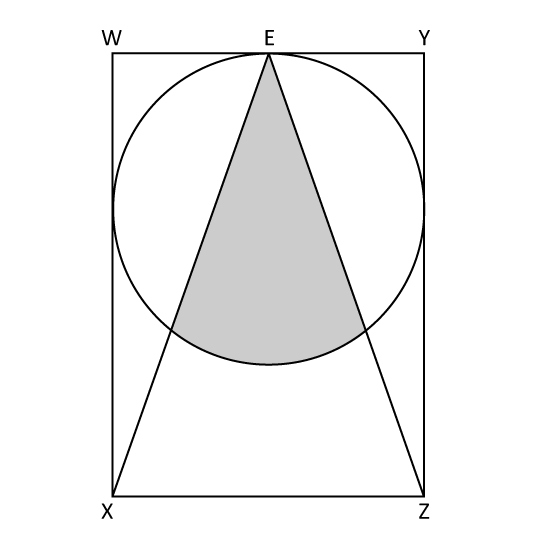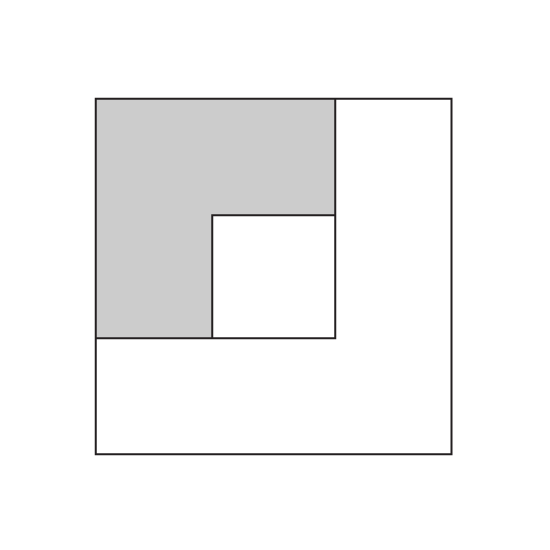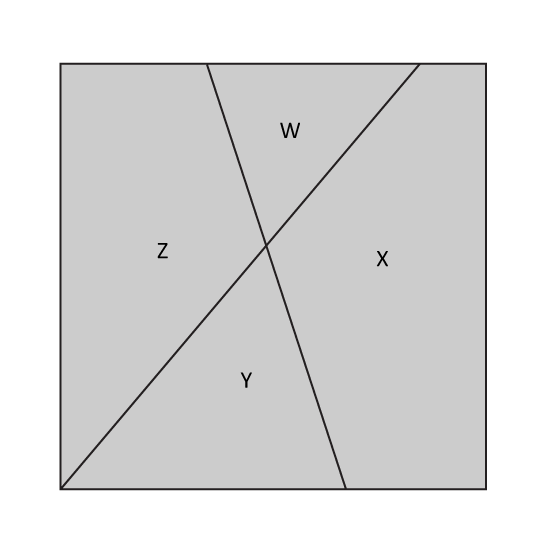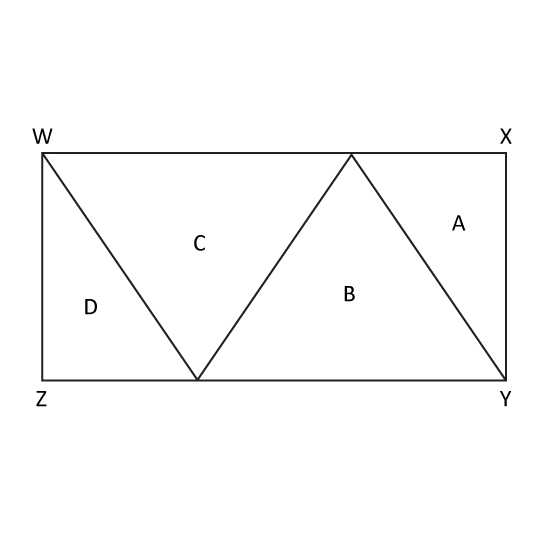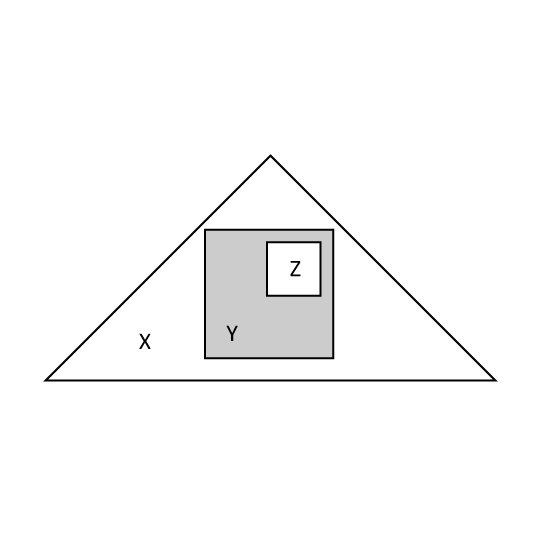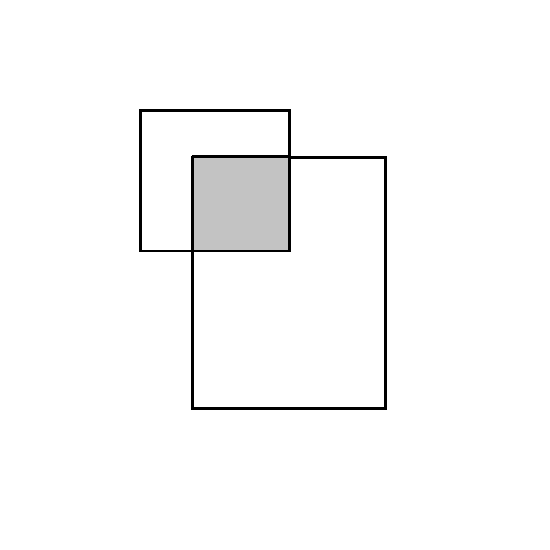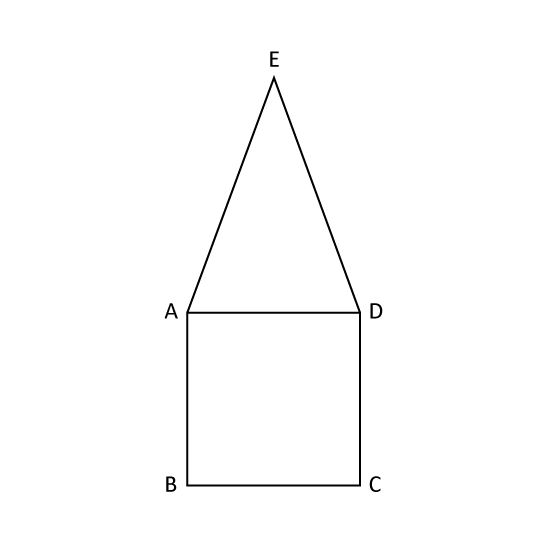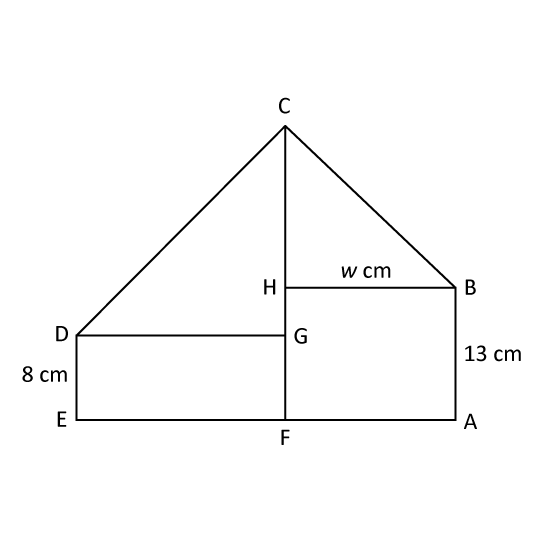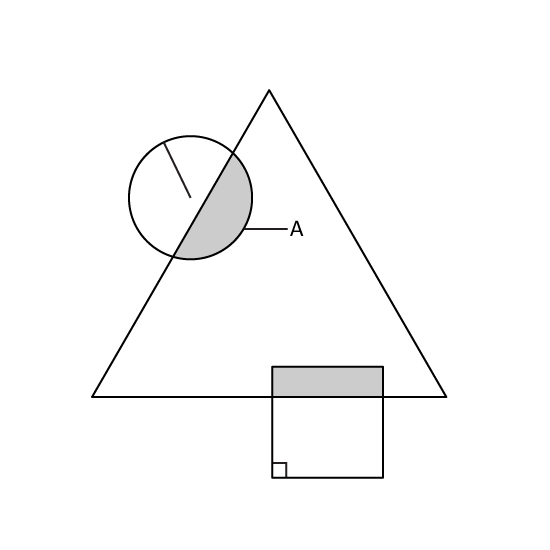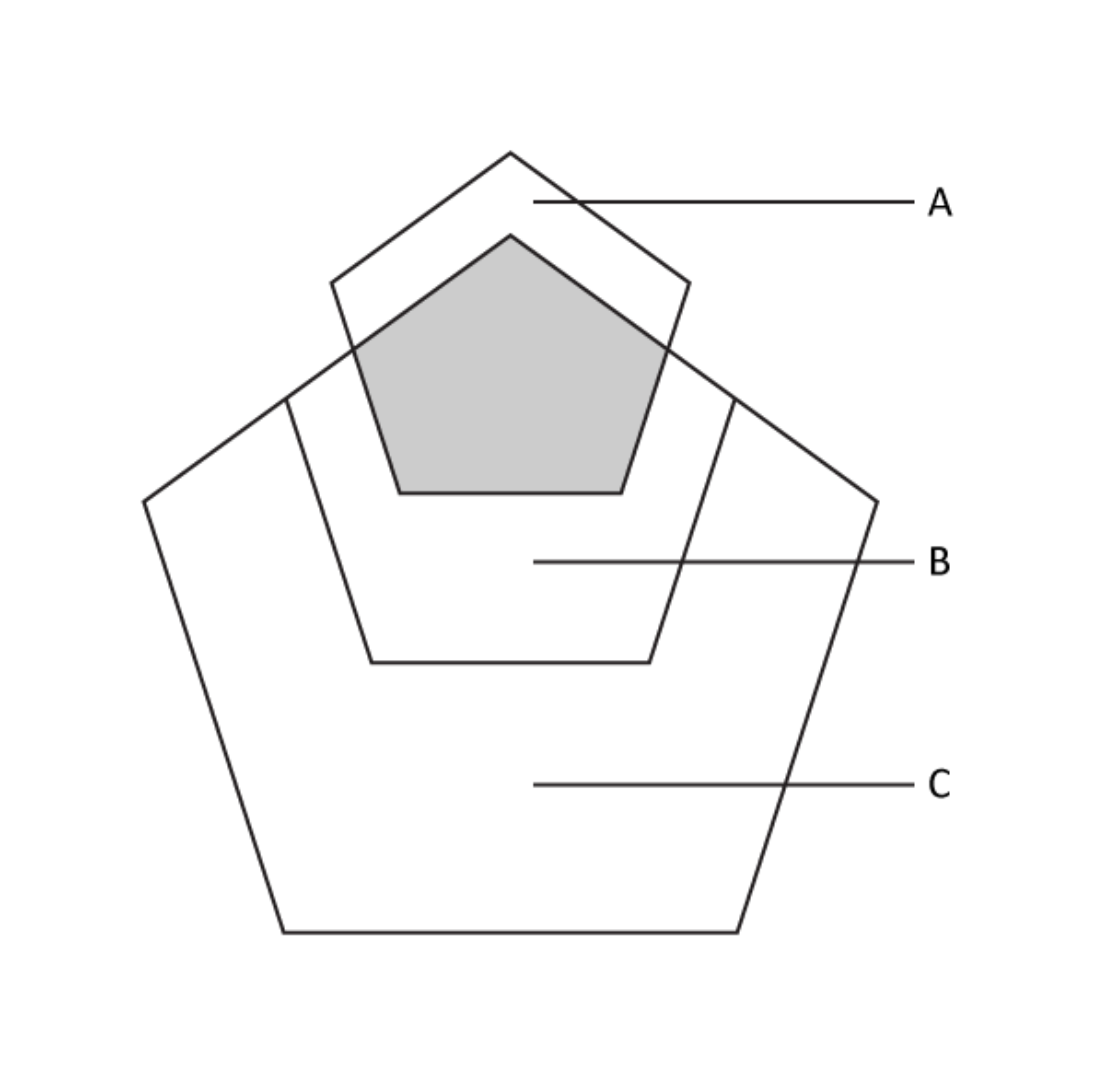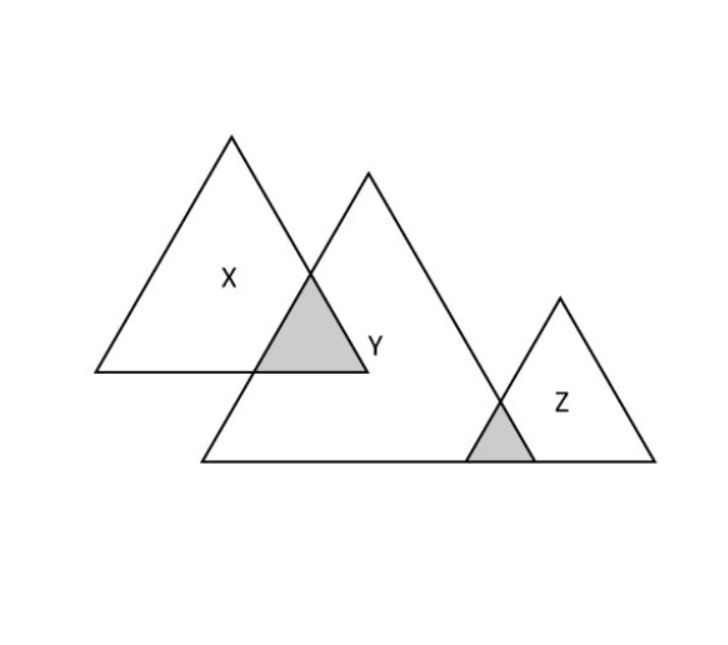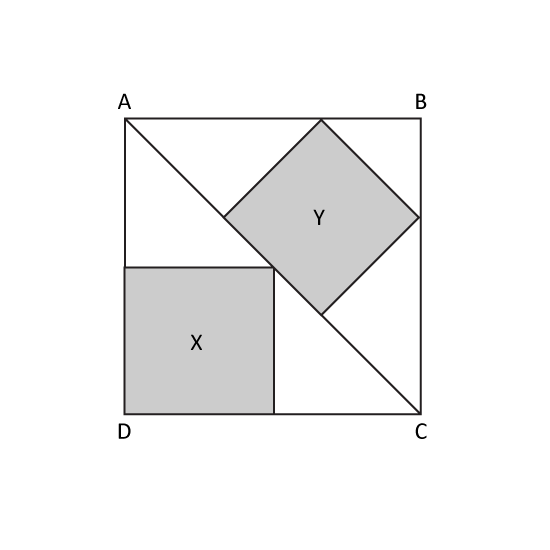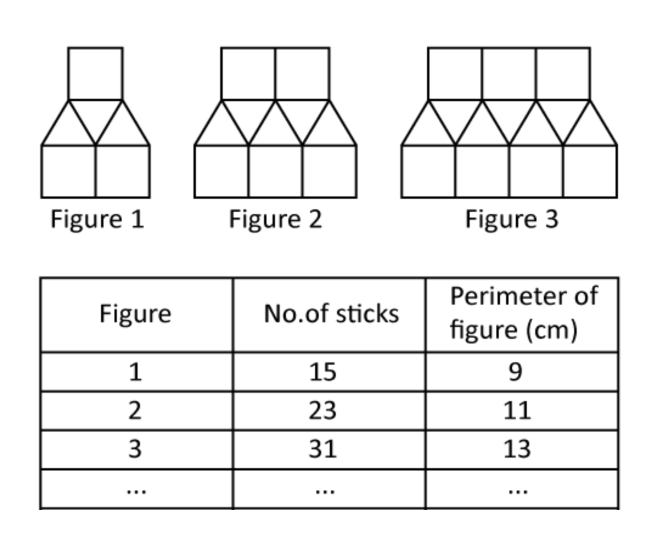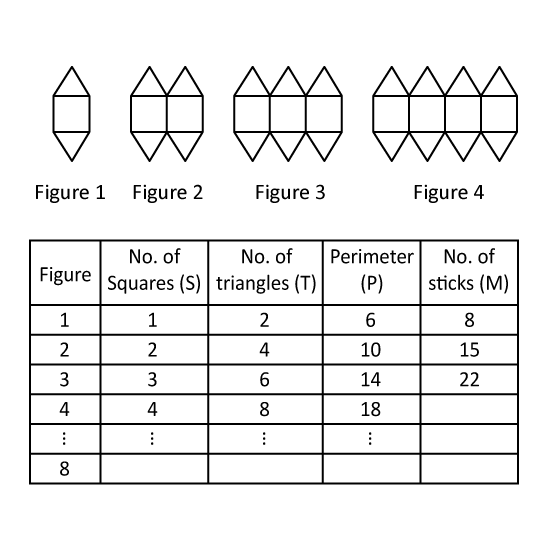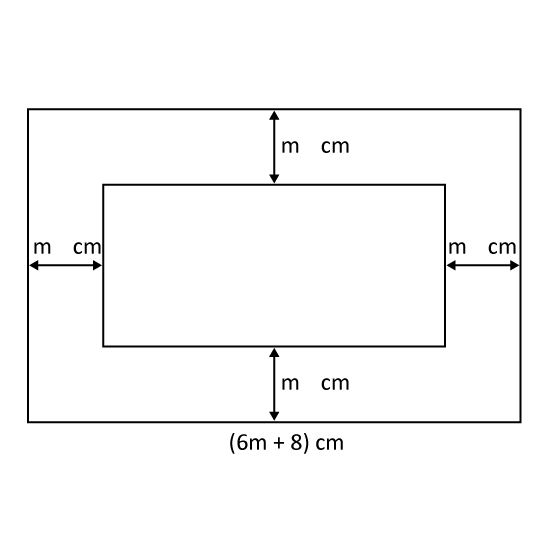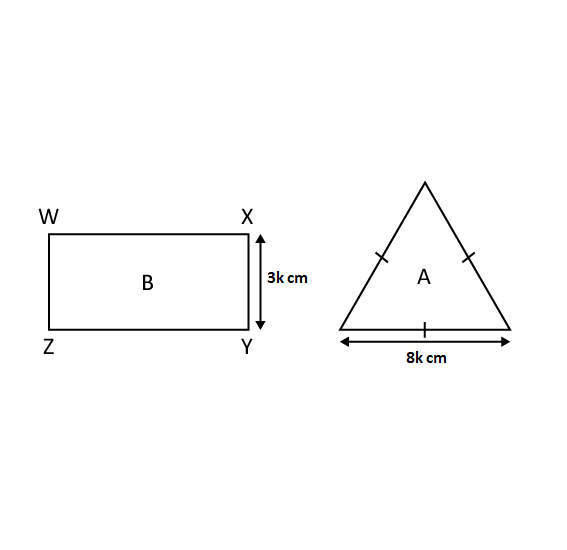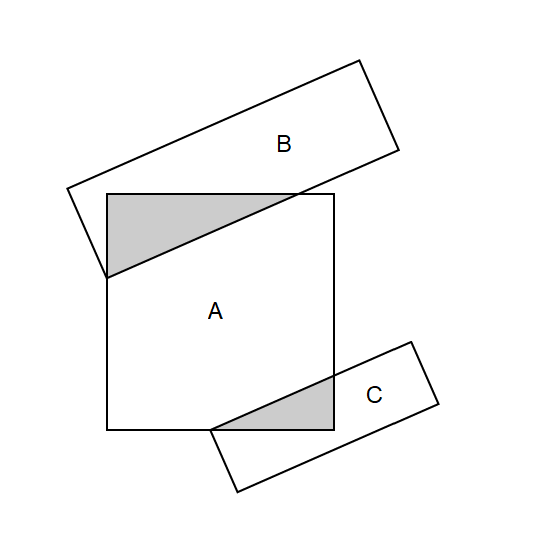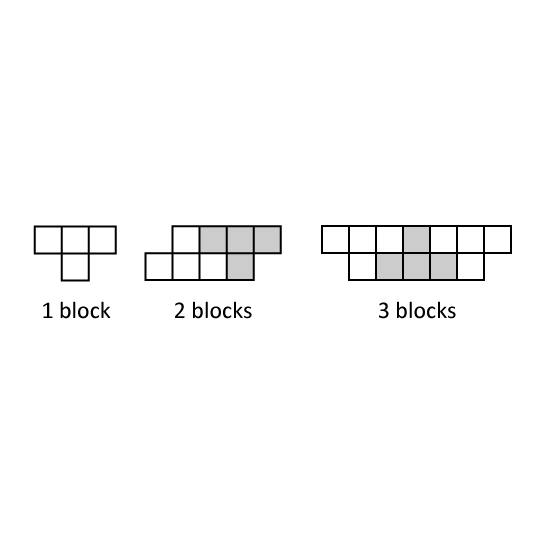Level 3
In the figure, not drawn to scale, 40% of the triangle XEZ is shaded. The ratio of the shaded part of circle to the unshaded part of the circle is 5 : 9. What percentage of the rectangle WXZY is shaded?
Level 3
In the figure, not drawn to scale, 40% of the triangle XEZ is shaded. The ratio of the shaded part of circle to the unshaded part of the circle is 5 : 9. What percentage of the rectangle WXZY is shaded?
Image in this question is not available.
Level 3
This figure is not drawn to scale. It is made up of 3 squares. The ratio of the area of the smallest square to the largest square is 2 : 9 while the shaded area is 37 of the unshaded area. What is the ratio of the shaded area to the area of the smallest square?
Level 3
This figure is not drawn to scale. It is made up of 3 squares. The ratio of the area of the smallest square to the largest square is 2 : 9 while the shaded area is 37 of the unshaded area. What is the ratio of the shaded area to the area of the smallest square?
Image in this question is not available.
Level 3
The square is divided into 4 parts, W, X, Y and Z. W and X form 12 of the square. The area of Y is double of the area of Z, while the ratio of the area of X to the area of W is 1 : 3.
What fraction of the square is the sum of the area of X and Y? Leave the answer(s) in the simplest form.
Level 3
The square is divided into 4 parts, W, X, Y and Z. W and X form 12 of the square. The area of Y is double of the area of Z, while the ratio of the area of X to the area of W is 1 : 3.
What fraction of the square is the sum of the area of X and Y? Leave the answer(s) in the simplest form.
Image in this question is not available.
Level 3
The figure, not drawn to scale, shows a rectangle, WXYZ, which is divided in 4 parts, A, B, C, D. The ratio of the area of D to the area of C is 1 : 3. The ratio of the area of C to the area of B is 2 : 7. If the area of A is 238 cm2 , what is the area of the rectangle WXYZ?
Level 3
The figure, not drawn to scale, shows a rectangle, WXYZ, which is divided in 4 parts, A, B, C, D. The ratio of the area of D to the area of C is 1 : 3. The ratio of the area of C to the area of B is 2 : 7. If the area of A is 238 cm2 , what is the area of the rectangle WXYZ?
Image in this question is not available.
Level 3
The figure is made up of two squares and a triangle. The ratio of the area of Triangle X to that of Square Z is 11 : 1. The ratio of the shaded area to that of the unshaded area is 1 : 3. If the difference between areas of Triangle X and Square Y is 464 cm2, what is the area of Square Z?
Level 3
The figure is made up of two squares and a triangle. The ratio of the area of Triangle X to that of Square Z is 11 : 1. The ratio of the shaded area to that of the unshaded area is 1 : 3. If the difference between areas of Triangle X and Square Y is 464 cm2, what is the area of Square Z?
Image in this question is not available.
Level 3
The figure is not drawn to scale. It is made up of a square and a rectangle. The ratio of the area of the square to that of the rectangle is 3 : 4. After the shaded part is cut out, the ratio of the area of unshaded part of the rectangle to that of the unshaded part of the square is 2 : 1. Given the length of the square is 9 cm, find the area of the shaded part.
Level 3
The figure is not drawn to scale. It is made up of a square and a rectangle. The ratio of the area of the square to that of the rectangle is 3 : 4. After the shaded part is cut out, the ratio of the area of unshaded part of the rectangle to that of the unshaded part of the square is 2 : 1. Given the length of the square is 9 cm, find the area of the shaded part.
Image in this question is not available.
Level 3
The figure, not drawn to scale, on the right shows 2 rectangles overlapping each other. The ratio of the shaded area to the area of Rectangle X is 4 : 9. The ratio of the shaded area to the area of Rectangle Y is 3 : 6. Find the ratio of the unshaded area to the total area of the figure.
Level 3
The figure, not drawn to scale, on the right shows 2 rectangles overlapping each other. The ratio of the shaded area to the area of Rectangle X is 4 : 9. The ratio of the shaded area to the area of Rectangle Y is 3 : 6. Find the ratio of the unshaded area to the total area of the figure.
Image in this question is not available.
Level 3 PSLE
The perimeter of figure ABCDE is (10w + 14) cm. The perimeter of square ABCD is 20 cm.
- Find the perimeter of triangle ADE in terms of w.
- The perimeter of figure ABCDE is 44 cm. What is the value of w?
Level 3 PSLE
The perimeter of figure ABCDE is (10w + 14) cm. The perimeter of square ABCD is 20 cm.
- Find the perimeter of triangle ADE in terms of w.
- The perimeter of figure ABCDE is 44 cm. What is the value of w?
Image in this question is not available.
Level 3 PSLEThe figure is made up of two rectangles, ABHF and FGDE, and two right-angled isosceles triangles, BCH and DCG. BA = 13 cm, DE = 8 cm and BH = w cm. AFE and CHGF are straight lines.
- Find the length of AE in terms of w. Give your answer in the simplest form.
- Find the total area of the figure when w = 16.
Level 3 PSLEThe figure is made up of two rectangles, ABHF and FGDE, and two right-angled isosceles triangles, BCH and DCG. BA = 13 cm, DE = 8 cm and BH = w cm. AFE and CHGF are straight lines.
- Find the length of AE in terms of w. Give your answer in the simplest form.
- Find the total area of the figure when w = 16.
Image in this question is not available.
Level 3
The figure is made up of a circle, a triangle and a square of sides 8 cm. The radius of the circle is 7 cm. The ratio of the area of the circle to the shaded area of the circle is 7 : 3. The ratio of the area of the square to the area of the triangle is 1 : 4. Given that 14 of the square is shaded, what is the total area of the unshaded figure?
(Take π = 227)
Level 3
The figure is made up of a circle, a triangle and a square of sides 8 cm. The radius of the circle is 7 cm. The ratio of the area of the circle to the shaded area of the circle is 7 : 3. The ratio of the area of the square to the area of the triangle is 1 : 4. Given that 14 of the square is shaded, what is the total area of the unshaded figure?
(Take π = 227)
Image in this question is not available.
Level 3
The figure is not drawn to scale. Three pentagons A, B and C are arranged as shown in the figure. The area of Pentagon A is
35 the area of Pentagon B. The area of Pentagon B is
35 the area of Pentagon C.
- Find the ratio of the area of Pentagon A to the area of Pentagon C.
- 23 of Pentagon A is shaded. What fraction of the whole figure is not shaded?
Level 3
The figure is not drawn to scale. Three pentagons A, B and C are arranged as shown in the figure. The area of Pentagon A is
35 the area of Pentagon B. The area of Pentagon B is
35 the area of Pentagon C.
- Find the ratio of the area of Pentagon A to the area of Pentagon C.
- 23 of Pentagon A is shaded. What fraction of the whole figure is not shaded?
Image in this question is not available.
Level 3
The figure is made up of 3 different triangles X, Y and Z. 20% of triangle X and 40% of triangle Z is shaded. The shaded area of X is the same as the shaded area of Z. What fraction of the figure is shaded if 40% of Triangle Y is shaded?
Level 3
The figure is made up of 3 different triangles X, Y and Z. 20% of triangle X and 40% of triangle Z is shaded. The shaded area of X is the same as the shaded area of Z. What fraction of the figure is shaded if 40% of Triangle Y is shaded?
Image in this question is not available.
Level 3 PSLE
ABCD is a square. The shaded parts X and Y are two squares with different areas. All the corners of squares X and Y lie either on the sides of square ABCD or on the line AC. If the area of the square is 360 cm2. Find the shaded area.
Level 3 PSLE
ABCD is a square. The shaded parts X and Y are two squares with different areas. All the corners of squares X and Y lie either on the sides of square ABCD or on the line AC. If the area of the square is 360 cm2. Find the shaded area.
Image in this question is not available.
Level 3
Each of the figures is made up of 1-cm sticks.
The table shows the number of sticks used to make the figures and their perimeters.
- Find the number of sticks in Figure 12.
- What is the perimeter of Figure 177?
- Which figure requires a total number of 4007 sticks?
Level 3
Each of the figures is made up of 1-cm sticks.
The table shows the number of sticks used to make the figures and their perimeters.
- Find the number of sticks in Figure 12.
- What is the perimeter of Figure 177?
- Which figure requires a total number of 4007 sticks?
Image in this question is not available.
Level 3
Each figure is made up of a number of identical sticks of 1-cm length.
- Find the perimeter of Figure 50.
- Find the number of sticks in Figure 100.
- Given that a figure has a perimeter, P, of 254 cm, find the number of squares in this figure.
Level 3
Each figure is made up of a number of identical sticks of 1-cm length.
- Find the perimeter of Figure 50.
- Find the number of sticks in Figure 100.
- Given that a figure has a perimeter, P, of 254 cm, find the number of squares in this figure.
Image in this question is not available.
Level 3
The figure shows 2 rectangles. The length of the bigger rectangle is (6m + 8) cm and the breadth is half its length. Find the perimeter of the smaller rectangle.
Level 3
The figure shows 2 rectangles. The length of the bigger rectangle is (6m + 8) cm and the breadth is half its length. Find the perimeter of the smaller rectangle.
Image in this question is not available.
Level 3
The perimeter of triangle A is equal to that of rectangle B.
- Find the length of rectangle B in terms of k.
- If k = 3, find the area of rectangle B.
Level 3
The perimeter of triangle A is equal to that of rectangle B.
- Find the length of rectangle B in terms of k.
- If k = 3, find the area of rectangle B.
Image in this question is not available.
Level 3
A rectangle has a length of 16 cm and a breadth of 4q cm. Find
- its area in terms of q,
- its perimeter in terms of q,
- the area of the rectangle if q = 3.
4 m
Image in this question is not available.
Level 3
The figure, not drawn to scale, is made up of Square A and Rectangles B and C. The area of Square A is 89 of the total area of Rectangles B and C. 14 of Square A is shaded. 14 of Rectangle B is shaded. 16 of Rectangle C is shaded. What fraction of the figure is shaded?
Level 3
The figure, not drawn to scale, is made up of Square A and Rectangles B and C. The area of Square A is 89 of the total area of Rectangles B and C. 14 of Square A is shaded. 14 of Rectangle B is shaded. 16 of Rectangle C is shaded. What fraction of the figure is shaded?
Image in this question is not available.
Level 3
A T-shaped block consists of 4 squares of 1 cm
2 each and the perimeter is 10 cm. Study the pattern with 1 block arranged to form 2 blocks and 3 blocks respectively.
- Find the perimeter of the pattern that consists of 20 blocks.
- If a pattern has a perimeter of 106 cm, find the number of squares that makes up the pattern.
Level 3
A T-shaped block consists of 4 squares of 1 cm
2 each and the perimeter is 10 cm. Study the pattern with 1 block arranged to form 2 blocks and 3 blocks respectively.
- Find the perimeter of the pattern that consists of 20 blocks.
- If a pattern has a perimeter of 106 cm, find the number of squares that makes up the pattern.
Image in this question is not available.
